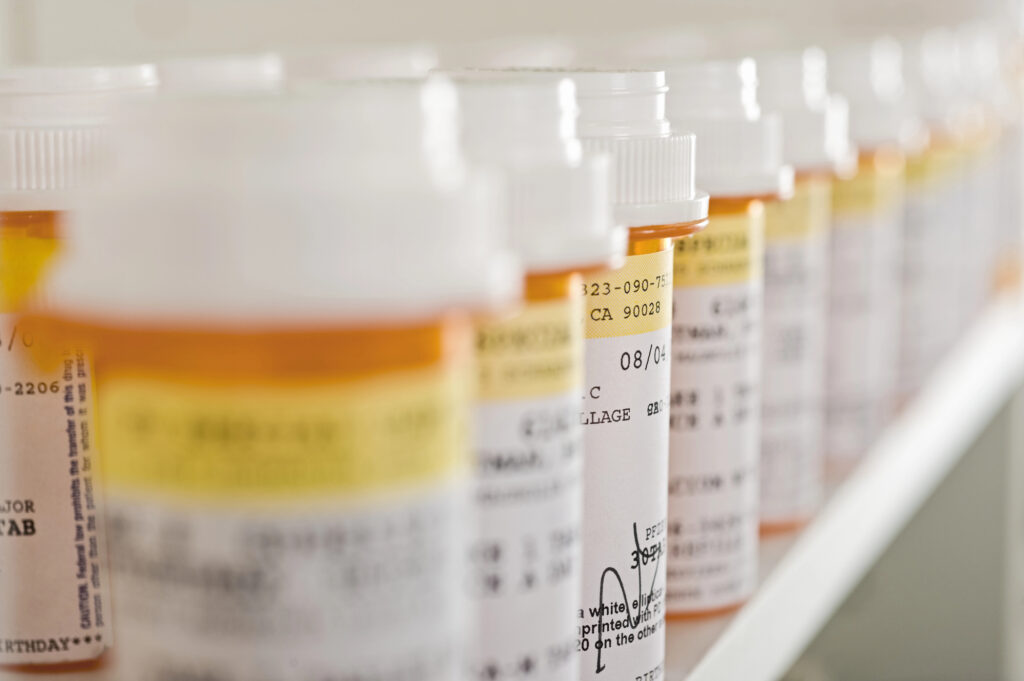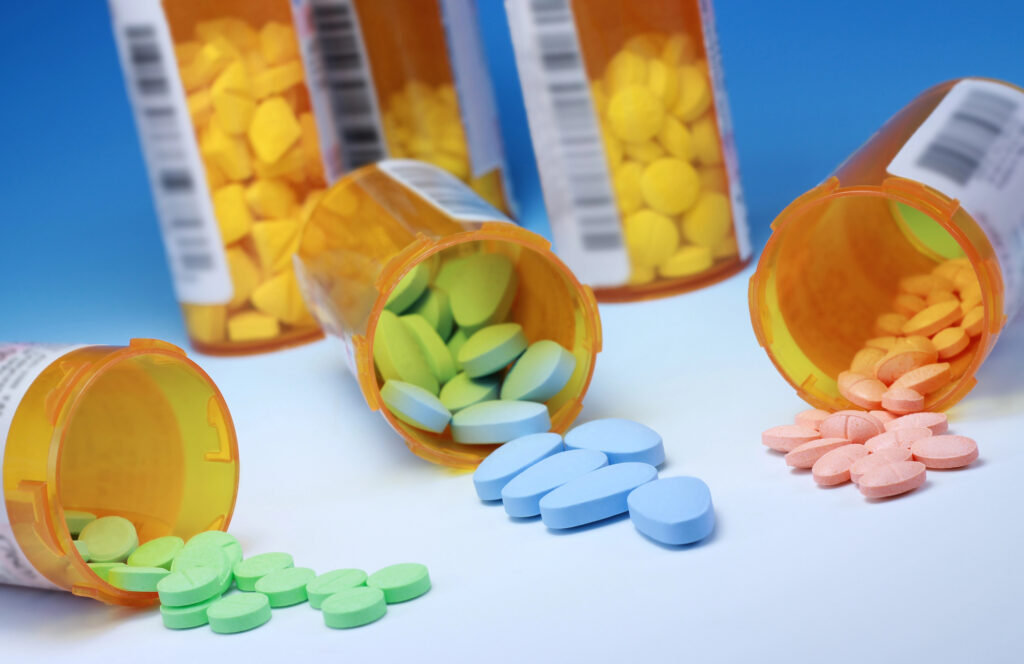Prescription drugs prices in the U.S. have reached staggering heights, forcing many people to make difficult choices between their health and other essential needs.
With prices rising faster than inflation, affording vital medications can feel like an impossible task, especially for those without insurance or facing high out-of-pocket costs. Steep prices can leave patients skipping doses, splitting pills, or forgoing treatment altogether, leading to severe health consequences.
Learn the underlying reasons behind these high costs and the practical steps you can take, including leveraging prescription drugs discounts and using prescription assistance programs, to help manage and reduce the financial burden of medication expenses.

The Factors Driving High Prescription Drug Prices
Prescription drug prices are influenced by a complex interplay of factors that can make medications seem unaffordable. Let’s dive into some of the main contributors:
Research and Development Costs
Pharmaceutical companies often justify high drug prices by citing the immense costs associated with research and development (R&D).
Bringing a new drug to market is a lengthy and expensive process, often costing billions of dollars and taking several years. The R&D phase includes lab research, clinical trials, regulatory approvals, and navigating a complex pipeline that has a high failure rate—many drugs that enter development never reach the market.
While these costs are substantial, they are often recouped through the pricing of successful drugs, impacting the final price consumers pay.
Lack of Price Regulation
Unlike many other countries, the U.S. does not have strict regulations on drug pricing. While Medicare is now negotiating prices for select drugs under the Inflation Reduction Act, these efforts are limited to Medicare.
As a result, pharmaceutical companies are still free to set their prices without government intervention, resulting in some medications being sold at far higher prices than in other nations. The lack of regulation allows drug prices to rise unchecked, driven largely by what the market can bear rather than the actual cost of production.
Marketing and Advertising Expenses
The pharmaceutical industry spends a significant amount of money on marketing and direct-to-consumer advertising. Campaigns are designed to educate, but they also encourage patients to ask for specific, often expensive, brand-name drugs.
The advertising cost is typically passed on to the consumer, further inflating the prices of medications.
Patent Protection and Market Exclusivity
Patents and market exclusivity are designed to reward pharmaceutical companies for innovation by giving them a temporary monopoly on new drugs. However, during this period, companies can set high prices without competition from generics or biosimilars.
Once a patent expires, prices usually drop as competition increases, but until then, patients are often stuck paying premium prices.

Pharmacy Benefit Managers (PBMs) and Middlemen
PBMs act as intermediaries between insurers, drug manufacturers, and pharmacies, negotiating prices and determining which drugs are covered by insurance plans. While PBMs were initially designed to help control costs, their involvement has introduced additional layers of complexity and often adds to the final cost of medications.
The rebates and fees that PBMs receive can contribute to higher prices, as these costs are typically passed on to consumers.
Supply Chain Issues and Manufacturing Costs
The production and distribution of medications involves a complex supply chain, including raw materials, manufacturing, packaging, and shipping. Disruptions in this supply chain, such as shortages of key ingredients or increased manufacturing costs, can drive up drug prices.
Additionally, maintaining stringent quality control standards and regulatory compliance adds further expenses that are reflected in the medication’s final price.
Strategies to Reduce Prescription Drug Costs
While the factors driving high drug prices are complex, there are actionable steps you can take to reduce your medication expenses:
Generic and Biosimilar Alternatives
One of the most effective ways to save on prescriptions is by opting for generic or biosimilar versions of brand-name drugs. Generics contain the same active ingredients and are just as effective but often cost a fraction of the price.
Always ask your healthcare provider or pharmacist if a generic alternative is available for your medication.
Shopping Around and Comparing Prices
Medication prices can vary significantly from one pharmacy to another. Taking a few moments to shop around can save you a considerable amount, especially if you need a medication long-term.
Asking About Lower-Cost Alternatives
If your medication is expensive, talk to your healthcare provider about more affordable options. They may be able to prescribe a different drug that is just as effective but costs less. Some pharmaceutical companies also offer copay cards or coupons that can lower the price for those with insurance.
Utilizing Prescription Discount Cards
Prescription discount cards are available for free and can be used at many pharmacies to provide savings on medications. They work by offering pre-negotiated prices for medications, often lower than what insurance plans offer.
While they are not insurance, discount cards can be a useful tool for those without coverage or those whose medications aren’t covered by their insurance plan.
Prescription Assistance Programs: A Lifeline for Patients
Prescription Assistance Programs (PAPs) can be a crucial resource for individuals struggling to afford their medications.
Offered by pharmaceutical companies, nonprofits, and government agencies, they provide free or discounted medications to eligible patients. PAPs are designed to help people who are uninsured, underinsured, or facing high out-of-pocket costs access the medications they need.
Each program has its own eligibility requirements, which may include income limits, lack of insurance coverage, or high medication costs even with insurance.
How Can PAPs Help You?
Prescription assistance programs can significantly reduce the cost of medications or provide them for free.
For individuals managing chronic conditions like diabetes, heart disease, or mental health disorders, PAPs can make an enormous difference in their ability to adhere to their prescribed treatment plans without financial strain.
How to Qualify for PAPs
Eligibility for PAPs often depends on factors like income, insurance status, and specific medication needs. Organizations like Health Access Now can assist patients in navigating these requirements and applying for the right programs.
This kind of support can be invaluable, especially when the application process feels daunting or confusing.

Get Access to Affordable Prescription Drugs Prices with Health Access Now
If you’re spending more than $50 a month on any medication, Health Access Now is here to help you secure significant discounts. We work on your behalf to apply for benefits from nonprofits and government programs, making medication more affordable. Visit our website to check if your prescriptions qualify for assistance in your state. Once qualified, we’ll guide you through the next steps.
Our mission is to alleviate the financial stress that medication costs can place on everyday individuals. Connect with us today to learn how we can support you.


